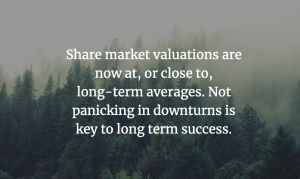Latest News
Categories
Recent Articles
Dollar Cost Averaging & Investing

Dollar-cost averaging is a strategy to reduce the impact of volatility by spreading out fund purchases, so you are not buying shares at a high point for prices.
Dollar-cost averaging is the strategy of spreading out your fund purchases, buying at regular intervals and in roughly equal amounts. When done properly, it can have significant benefits for your portfolio.
This is because dollar-cost averaging “smooths” your purchase price over time and helps ensure that you are not dumping all your money in at a high point for prices.
Dollar-cost averaging can be especially powerful in a decreasing market, allowing you to “buy the dips,” or purchase at low points when most investors are too afraid to buy. Committing to this strategy means that you will be investing when the market or a stock is down, and that’s when investors get the best deals.
How is dollar-cost averaging calculated?
To understand how dollar-cost averaging can benefit you, you need to compare it to other possible buying strategies, such as purchasing all your funds in one lump-sum transaction. Below are a few scenarios that illustrate how dollar-cost averaging works.
Scenario 1: In a falling market
Here is where dollar-cost averaging really shines. Let’s assume that $10,000 is split equally among four purchases at fund unit prices of $50, $40, $30 and $25 over the course of a year. Those four $2,500 purchases will buy 295.8 units, a substantial increase over the lump-sum purchase of only 200 shares if bought all at once for $50 per unit.
Because you own more unit than in a lump-sum purchase, your investment grows more quickly as the stock’s price goes up.
Scenario 2: In a rising market
In this scenario, let’s assume the same $10,000 is split into four installments at prices of $50, $65, $70, and $80, as the market rises. These purchases would secure 155.4 units.
This is a scenario where dollar-cost averaging protects you from buying at too high a price. out in real life. Stocks are volatile. Even great long-term stocks move down sometimes, and you could begin dollar-cost averaging at these new lower prices and take advantage of that dip.
Does dollar-cost averaging really work?
Dollar-cost averaging provides three key benefits that can result in better returns. It can help:
• Avoid mistiming the market
• Take emotion out of investing
• Think longer-term
If you’re dollar-cost averaging, you’re buying when people are selling fearfully, getting a nice price and setting yourself up for strong long-term gains. The market tends to go up over time, and dollar-cost averaging can help you recognize that a bear market is a great long-term opportunity, rather than a threat.

Mark Jones, Hallam Jones
Want to find out more? Simply give Mark Jones a call on 0800 404 202 or send him a message.
This content has been provided for information purposes only and is not intended as a substitute for specific professional advice on investments, financial planning or any other matter. Read our disclaimer notice and privacy statement.





